Matador Network's Blog, page 2319
February 12, 2014
Behind the scenes of Into the Mind
LOVE THIS behind the scenes look at Into the Mind, a Sherpas Cinema production. They involve the entire Whistler community, giving people who’d otherwise have no business being in a ski movie a chance to shine.
Skip ahead to 5:49 to see Julian Carr huck a front-flip off the 185-foot Air Jordan. Epic. 
Check out the official trailer of Into the Mind here.
The post How a film production involved an entire community in their epic ski movie appeared first on Matador Network.

35 surprising facts about sharks
SHARKS ARE FISH that have cartilage instead of bones, a dorsal fin, and toothlike scales. Beyond that, few similarities exist among the 400 species of sharks — except for their common awesomeness — rendering it impossible to stereotype sharks. Let’s clear the water.
The facts on attacks

Photo: Christopher Michel
1. The only sharks — remember there are more than 400 species — that have killed more than one human include the Great White, Tiger, Bull, Requiem, Blue, and Sand Tiger Sharks.
2. Shark bites rarely kill. Sharks bite out of curiosity (they have no arms or antennae so cut them a break). Once they realize you’re not food — and you are not — they usually go away. The rare fatality is usually a result of blood loss from the bite, not from a full-on shark attack.
3. Sharks are stronger than you, faster than you, and are capable of making blood and guts of you in short order. If humans were a food source, all shark attacks would result in fatalities, and there would be many more attacks. But there aren’t.
4. The International Shark Attack File (ISAF) is the only long-term, scientifically documented, global database on all known shark attacks. ISAF coordinators provide regular advice on shark attack issues to governmental agencies, coastal managers, beach safety professionals, the medical community, and the media.
They confirm a certain number of unprovoked attacks per year around the world, but data support the conclusion that attacks are a result of greater numbers of people recreating in shark habitat, rather than an increase of shark viciousness.
5. The US has the most recorded attacks, with 1,022 recorded between 1670 and 2012 — obviously a huge timeframe. Australia comes in second, but has the most reported fatalities (144 as of 2012). Worldwide, 70-100 shark attacks are reported annually, resulting in about 5-15 deaths. Most attacks occur in nearshore waters where sharks feed and can become trapped at low tide, or near steep dropoffs where their prey congregate.
6. Unprovoked shark attacks come in three varieties:
Most common: hit and run attacks. Most common victim: swimmers and surfers. Why: mistaken identity from poor water visibility from breaking surf. Result: small lacerations, often below the knee, seldom life-threatening.
Less common: “Bump and bite” and “sneak” attacks. Most common victim: divers or swimmers in deeper waters. Result: multiple bites, frequently resulting in death. Why: feeding or defending their space against antagonistic behaviors.
7. Shark attacks are a relatively infrequent hazard that must be acknowledged by anyone entering the marine environment. But let’s get some perspective. So many more people are injured and killed while driving to and from the beach than by sharks. More stitches sew up lacerations from seashell cuts on feet than lacerations from shark bites. As in any recreational activity, certain risks are inherent, such as shin splints with jogging, and sprained ankles with tennis. For more risk comparisons, check out the Florida Museum of Natural History site.
8. It’s true there are unprovoked shark attacks. But they are usually the result of mistaken identity in rough waters where surfers like to go. And let’s be honest, we’re going into their habitat, but you still have a much greater risk of dying by sand hole collapse!
Their fascinating biology

Photo: Ryan Espanto
9. Ancestors of modern sharks swam the seas over 400 million years ago, making them older than dinosaurs. Kinda seems like they are meant to be here.
10. Obligate ram ventilators, such as Great Whites, must swim constantly with mouths open for oxygen-rich water to flow through the gills. If they sleep for more than a few moments at a time, they asphyxiate. However, some sharks, such as the Nurse Shark, have spiracles and cheek muscles that force water across their gills — buccal pumping — allowing for stationary rest.
11. Sharks have multiple layers of teeth, and if one breaks, the one behind it moves up to take its place. Sharks can shed thousands of teeth during their life, leaving behind teeth on beaches — a little gift from them to us.
12. Dermal denticles are scales on the skin that point towards the tail and help reduce friction from the water, making them Olympic swimmers. But rub the skin from the tail toward the head and it feels like sandpaper.
13. Contributing to the cryptic nature of sharks is their countershading. The tops of shark are dark, making them difficult to see from above against the dark ocean below. Their undersides are pale as to blend with the backdrop of bright sun-lit water.
14. Darting through the water at up to 20mph, the fastest shark is the Shortfin Mako. It can chase down the fastest of all fishes, including tuna and swordfish.
15. These elegant predators are perfectly designed for life in the ocean and help maintain balance in the marine ecosystem. They have shaped life in the oceans for over 400 million years, and are essential to the survival of the entire planet — including mankind.

Photo: Dylan
16. The manatee of the shark world is the Whale Shark. It is on my bucket list to share space with these gentle giants, and be dwarfed by the largest fish — let alone shark — in the ocean. Busting the myth that sharks are man-eaters, this bus-sized shark peacefully slurps down tiny plankton.
17. The smallest shark is a deepwater dogfish shark, the Dwarf Lanternshark, which, at under 8 inches, can fit in the palm of your hand. Not quite a man-eater.
18. The average lifespan of a shark is 20-30 years. But as I mentioned, there is no average shark — the Spiny Dogfish Shark holds the record for the longest lifespan at 100 years.
19. A shark’s brain is complex. At two feet long, a Great White’s brain is a linear Y-shaped string of millions of neurons that arranges its functions into hind-, mid-, and fore-brain groups (as opposed to a human brain, which is folded into a compact, circular cluster). Almost two-thirds of the shark’s brain is devoted to its olfactory organs, enabling excellence in identifying prey, recognizing territorial markers, and finding mates.
20. Sharks can see color, and their lenses are up to seven times as powerful as a human’s.
On conservation
21. Humans are more dangerous to sharks than sharks are to humans. You can swim with sharks with no cage if you do it responsibly. Humans are the predators that will attack unprovoked with ill intent — not the sharks!
22. Humans kill 100 million sharks every year. Not because of mistaken identity, as with the sharks. But for their body parts. One of the worst examples is shark finning, where sharks are caught and thrown back to their bloody deaths after their fins are sliced off. Unable to swim without their fins, they sink toward the bottom and die. Shark fin soup is a delicacy in Asia and elsewhere. Shockingly, the fins are not used for taste, but to create a gelatinous consistency — something that could be achieved using any number of alternatives.
23. Shark products are sold as a phony remedy to ward off cancer, based on the myth that sharks don’t get cancer. In actuality, there are hundreds of cases of sharks with cancer. The multi-million-dollar cartilage industry has decimated shark populations, as the companies harvest up to 200,000 sharks every month in US waters.

More like this: The 5 biggest crises facing our oceans today(and why you should care)
24. Another cause of death is longlines, which are hooked and baited lines of filament that indiscriminately kill anything that tries to eat the bait, including albatross…and sharks.
25. Although some regions, such as the European Union, have banned shark finning, commercial fisheries for body parts such as fins, meat, liver oil, and cartilage are largely unregulated.
26. Extinction of several shark species is imminent in our lifetime. 6-8% of sharks are killed each year, an unsustainable rate for populations of fish that are slow to grow and reproduce. Sharks can’t keep up with the current rate of exploitation.
27. The Convention on International Trade in Endangered Species (CITES), an international agreement among governments to prevent the unsustainable international trade of wildlife, lists eight species of shark in Appendix II, which is an index of species not necessarily threatened with extinction, but the trade of which is controlled in a manner compatible with their survival.
28. Shark culling (read: killing) regulations have been passed in places like Reunion Island, citing shark attack “crises.” Avoiding surfing in areas with shark warnings can help address this. Why not put more focus on the real shark crisis — the decimation of shark populations from human attacks?
29. The Sea Shepherd Conservation Society patrols marine protected areas, exposes shark product industries, and directly intervenes to stop the slaughter of sharks.
30. Sharks are not vicious man-eaters, and any management laws based on that premise could result in ecological imbalance and extinctions. Public opinion and shark management should be informed by science, not by shock journalism or movies like Jaws and Sharknado. We should understand them, conserve them, and ensure their continued existence.
What you can do

Photo: Ibrahim Iujaz
31. Support the work of the Sea Shepherd Conservation Society.
32. Don’t patronize restaurants that sell shark fin soup. Don’t buy shark products, such as phony medical remedies or tourist trinkets like shark jaws or shark-skin wallets, if you don’t know how the products were obtained.
33. Shark tourism can be an act of conservation because it creates an economic incentive to protect sharks rather than kill them. Misunderstanding of sharks leads to weak protection of sharks. The experience of diving with sharks builds awareness, and those divers can become ambassadors for shark species.
34. Help prevent shark encounters. Get educated about reducing the risk of a shark encounter before entering the marine environment. Get educated on what to do if you encounter a shark. Get educated on how to dress in the water.
35. Get a new perspective on sharks. If you made it through this article, you’re off to a good start. 

This post is sponsored by Contiki, the world leaders in youth travel. Contiki channels a sizable portion of its energy into supporting the world’s oceans, because protecting oceans has a domino effect on Earth ecosystems that is global in scale. Contiki & Matador are looking for storytellers committed to making a difference in the world. Share with us where you feel closest to nature for a chance at winning one of three spots on a Costa Rica Unplugged adventure.
The post 35 surprising facts about sharks that might change your opinion of them appeared first on Matador Network.

February 11, 2014
On Shirley Temple Black, and the legacy we leave behind
My grandmother introduced me to Shirley Temple. She didn’t have cable in her house, but she had a VCR, and we’d watch Temple’s classic films together. I remember being envious of the energy she exuded on-screen, her perfect, bouncy curls, and the way she could turn even the coldest, meanest, old man’s heart from stone, into mush. “The Good Ship Lollipop” was my go-to audition song for community theater, but how could I choose anything else? If Shirley Temple was a star by age six, I had a lot of catching up to do.
Shirley Temple later played a role in global politics as well. She was appointed to be the US Ambassador for two countries that are very close my heart – Ghana, and the Czech Republic (then Czechoslovakia). I admire how she always remained true to herself, and was lucky enough not to succumb to drug or alcohol addictions. Her life was by no means easy, and many pity how her childhood was essentially snatched away from her – but then again, I’d probably take acting in film too, over regular life during the Great Depression.
I was surprised to hear about Temple’s passing, at the age of 85, but at the same time, I knew she had lived a wonderful life. It reminded me that there is always a legacy to leave behind. If you suddenly passed away, how would you want to be remembered? The answer to that question reveals so much about ourselves, our values, and what we must change to preserve that legacy. For me, Shirley Temple Black leaves behind a lifetime of talent, achievement, and love (not to mention, a delicious drink made with grenadine).
I hope someone can say the same about me some day. 
The post On Shirley Temple Black, and the legacy we leave behind appeared first on Matador Network.

Portraits of the Mazahua and Mixteca
I’VE STARTED TO REALIZE that meeting and photographing different cultures and subjects with diverse belief systems can broaden one’s spiritual and cultural horizons much more rapidly than just studying them from a distance at home. It might be a cliché to say this, but I really feel it’s easy to become jaded when we grow up in a Western culture — and, even worse, not even be aware of it.
The last part of my stay in Mexico really brought this to my attention. One of the many events I shot in Mexico was an indigenous rights conference, held at the Congressional Building. During the proceedings, a short, dark-skinned man wearing traditional tribal clothing approached me. He introduced himself as Lobo Blanco, and as we talked, I learned that he was from an indigenous tribe called the Mazahua. He seemed excited to hear that our tour was concerned with human rights, and he invited us to a private event at what he described as a sacred temple, which I later learned was Templo Mayor.
I was more than happy to accept the invitation, secretly excited about the opportunity to meet the other tribe members.

1
Templo Mayor, Mexico City
The next day we met Lobo Blanco near an old Catholic Church. Lobo mentioned that although he was Mazahua and the Templo Mayor is Aztec, the site is still enormously important to his tribe. His ancestors had stood where he was standing and paid tribute to the most influential and powerful people in Mexico at the time–the Aztecs. He also explained that the Aztecs had built the enormous temple over 400 years ago and that over several centuries they continued to build layer upon layer of it until it reached what it is today: 7 temples, each one built on top of the last. From what I understand, the Spanish didn’t necessarily appreciate the brutal nature of the Aztecs when they arrived, and in their religious crusade they buried the temple and built their church on top of it, profoundly affecting other tribes such as the Mazahua and Mixteca.
And so, the Templo Mayor sat steeping in the Earth, rich in history and waiting to be rediscovered until quite recently, when city electrical workers inadvertently turned up a large stone disc depicting Coyolxauhqui, the Aztec moon goddess. Efforts to uncover it have been underway ever since–and as Lobo showed me around the ancient temple, I could see the immense archaeological construction and scaffolding taking place.

2
Wall of stone skulls, recently excavated from Templo Mayor
After spending three hours with the tribes at the conference in the Templo Mayor, I went looking for Lobo Blanco. I wanted to photograph the man heading the conference. This was Lobo’s chief and the leader of the Mazahua, a man named Abuelo. I found him standing in front of an intimidating wall, one fashioned entirely of stone skulls. Lobo explained that Abuelo felt it is was no coincidence that we were able to be there that day, and that he felt the Gods had blessed our journey.
I let this soak in, and after some time I asked if Lobo thought Abuelo would allow me to photograph him. Lobo nodded lightly. No more than an hour later, the tribal meeting adjourned and the chief showed up outside of Templo Mayor dressed no differently than one of his ancestors, who I would have seen 500 years ago standing in this very place. Despite the sun being past the horizon and darkness approaching, I was thrilled.

3
Francisco and Aaron successfully fashioning a human c-stand
In the process of setting up gear, the bulb on my X1600 Lightning made an unfamiliar pop while test firing and died; upon inspecting it I discovered that the entire bulb had exploded. After quickly rummaged through my pack I found a small SB-700 Speedlight. I enlisted the help of one of the tribe members and my guide Francisco to form a makeshift light stand with the speedlight inside of a heavily used
Unbelievable bottle opening trick
I DON’T drink anymore, but this almost makes me want to get back on the sauce. Apparently you need a pretty strong magnet and have to tap fast with the coin. Go on and test this out. Report your results in the comments. 
Post by Keith Jensen.
UPDATE: After viewing another video by this guy where he pours water out of a bottle and it immediately turns to ice cubes, I’m inclined to believe the above video is fake. Nonetheless, it’s an example of some great editing.
***Explore the world party scene with Matador’s own nightlife guide 101 PLACES TO GET F*CKED UP BEFORE YOU DIE.
Part travel guide, part drunken social commentary, 101 Places may have some of the most hilarious scenes and straight-up observations of youth culture of any book you’ve ever read.***
The post Here’s an unbelievable beer bottle opening trick you’ve never seen before appeared first on Matador Network.

68 insanely colorful places [pics]
No, you don’t need to adjust your screen, nor are any of these the product of extreme photoshopping.
Instead, these places (natural and manmade, seasonal and perennial) possess such incredible and unusual colors that it’s hard to believe they really exist.
The Crayola junkie in me was compelled to catalog them here.

1
Kawachi Fuji Garden, Kitakyushu, Japan
Despite the internet popularity of the Wisteria Tunnel image at this Japanese garden, the private Kawachi Fuji Garden remains one of Japan’s better kept secrets. Located in the Fukuoka Prefecture in Kyushu, the garden is home to 150 trees, broken into 22 distinct breeds of wisteria, and costs between 300-1000 yen to enter depending on the season. The prime time to visit the garden is April and May, with the annual Wisteria festival held at the end of April.
(via)

2
Canola flower fields, Yunnan, China
These yellow canola flowers (also known as rapeseed flowers) bloom in early spring, giving the small county of Luoping in Yunnan the appearance of a golden ocean. These flowers don’t just attract humans, though; Luoping is also a national center for raising bees and producing honey.
(via)

3
Morning Glory Pool, Yellowstone National Park, Wyoming
The colors in this hot spring have been more thoroughly researched than the distinctive pink hue of Lake Hillier and are definitely due to bacterial colonies lining its walls. Sometimes, after heavy seismic activity in the area, the pool will erupt as a geyser.
(via)

See more like this: 60 insane cloud formations from around the world [pics]

4
Hitachi Seaside Park, Hitachinaka, Ibaraki, Japan
Sprawling over an area of 470 areas, the Hitachi Seaside Park is best known for the “Nemophila Harmony,” a massive flower festival held in May celebrating the blooming of over 4.5 million translucent blue Nemophila (baby blue-eyes) flowers. The park is also home to 170 types of tulips, over a million daffodils, and myriad other flowers. Fun fact: Hitachi Seaside Park also hosts the “Rock in Japan Festival” annually, in August.
(via)

5
Fly Geyser, Northern Nevada
An accidental man-made phenomenon, Fly Geyser is the byproduct of well drilling in the 1960s–a poorly capped well began spewing dissolved minerals, and over the years those minerals have piled up to form the geyser’s distinctive rainbow pillars. Sadly, it’s on private property (though that hasn’t stopped people from extensive blogging about how to find it).
(via)

6
Sagano Bamboo Forest, Arashiyama, Japan
Designated as both a Historic Site and Place of Scenic Beauty under the Japanese Monument classification system, Arashiyama (or Storm Mountain, so-called for the mountain near the district opposite the Ōi River) is located on the western edge of Kyoto. Another season-dependent region, tourism to Arashiyama peaks during the spring and fall, with the blooming of cherry blossoms and the color changes of autumn. Fun fact: The Sagano Bamboo Forest lies just north of the Togetsukyo bridge (Moon Crossing Bridge), and depending on which bank you stand on, the river you’re facing is called either the Hozu River (on the west side) or the Katsura River (on the east side).
(via)

7
Zhangye Danxia, Southwest China
More popularly known as the “Rainbow Mountains of China,” the Zhangye Danxia landforms cover an area of almost 300 square miles, and are formed from geological processes unique to China. This landform was declared a World Heritage Site in 2010.
(via)

8
Yi Peng, Thailand
Celebrated annually throughout Thailand and parts of Laos, but with the most impressive display at Chiang Mai, the festival of merit now coincides with Loi Krathong, and is celebrated together by releasing a seemingly infinite amount of lanterns both into the sky, and floating along the waters.
(via)

9
Cinque Terre, Italy
Cinque Terre (“the five lands”) is a portion of coast on the Italian Riviera composed of five villages, built on terraces that overlook the sea. Pictured is the village of Manarola.
(via)
Intermission
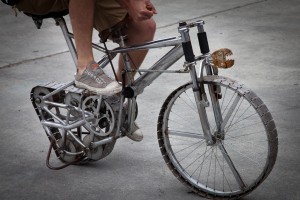
40 of the most creative custom bikes on the road [pics]

24 exceptional ice sculptures
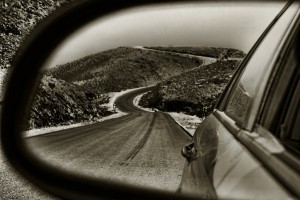
41 places so rad you have to stop driving and get out of the car [PICs]
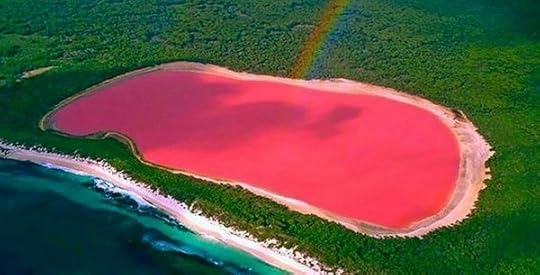
10
Lake Hillier, Middle Island, Australia
There is no consensus on why this particular lake is pink, but some hypotheses include the presence of dye produced by bacteria in the water, or colonies of red bacteria living in the lake’s salt crusts. Fun fact: the water stays pink even when you take it away in a bottle, so it’s not just a trick of the light.
(via)

11
Tulip fields, The Netherlands
As the world’s main producer of tulips, some 3 billion tulip flowers are grown annually in the Netherland’s Duin- en Bollenstreek (Dune and Bulb region in Dutch). The prime time to see the tulips is between the end of March and the beginning of May.
(via)

12
Santorini, Greece
A small island located in the southern Aegean Sea off Greece’s southeastern coast, Santorini is renowned for its blue-roofed, whitewashed architecture, killer sunsets, and its fascinating volcanic activity.
(via)

13
Burano, Venice, Italy
Burano is located about 4 miles from the city of Venice. The colors of the houses are subject to a strict, government-regulated system; one must submit a formal request to paint one’s home, and the government will respond with a specific set of colors acceptable for that particular property.
(via)

14
Black Forest, Germany
Home to its own unique breed of cattle, horses, and a giant earthworm, the Black Forest is part of a mountain range situated in the state of Baden-Württemberg, in the southwestern region of Germany. The actual forest consists mostly of Norway Spruce, Douglas Fir, and White Pine trees, and is riddled with popular hiking, biking, and cross-country skiing trails. The region is also known for the origins of Black Forest Ham, Black Forest Cake, and renowned precision clocks (made before the closure of the factories over the two World Wars).
(via)

15
Chefchaouen, Morocco
A mountain town in northwestern Morocco, Chefchaouen (or just “Chaouen” to the locals) is named for the mountain peaks above the town, which have the appearance of two goat horns (“chaoua”). The countryside surrounding this city is renowned as a prolific source of kief; in fact, the region is one of the main producers of cannabis in Morocco.
(via)
Intermission

15 of the most haunted places in the world [pics]

9 ‘extreme’ places you can visit (fairly) easily [pics]

Celebrating the sunsets of Seattle

16
Valparaiso, Chile
This Chilean port city, also known as “Little San Francisco” and “The Jewel of the Pacific,” is where Chile’s National Congress has convened since 1990. Valparaiso is home to South America’s very first fire department, as well as a famed and elaborate system of funicular elevators.
(via)
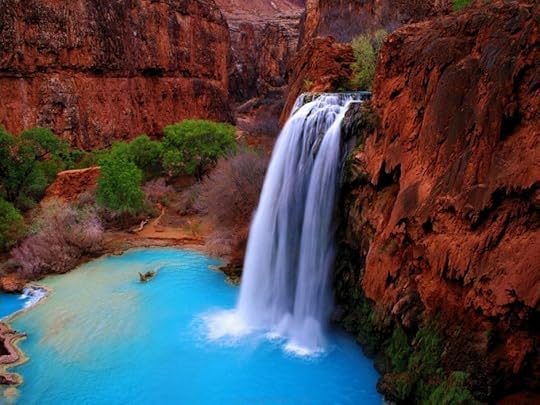
17
Havasu Falls, Grand Canyon, Arizona
The Havasu creek plummets 100 feet over a vertical cliff in the Grand Canyon, landing in a pool rich in calcium carbonate (which gives it that vivid blue-green color). Because the mineral content of the creek is so high, the configuration of the waterfall is always changing (as the cliff top builds up and breaks off).
(via)

18
Antelope Canyon, Arizona
Just southwest of Havasu Falls is Antelope Canyon in northern Arizona. Formed by flash floods roaring through sandstone, the canyon’s name in Navajo actually translates to “the place where water runs through rocks.”
(via)

19
Rotorua Hot Springs, New Zealand
Powerful geothermal activity in the area has created an array of hot springs and mud pools in and around Rotorua, New Zealand. The downside of all of that geothermal activity is that it causes heavy hydrogen sulfide emissions, which smell like rotten eggs and have earned the city the nickname “Sulfur City.”
(via)

20
Daigo-ji Temple, Kyoto, Japan
Daigo-ji Temple, Kyoto, Japan
(via)

21
Panjin Red Beach, China
Located in the Liaohe River Delta, this beach is home to a massive population of seaweed, which flourishes in the saline-alkali soil. Though the seaweed is green for most of the year, it undergoes its startling transformation to red in the autumn.
(via)

22
Takinoue Park, Hokkaido, Japan
This 2.5-acre park is famous for the Shibazakura (pink moss) that grows there and blooms in May and June. In fact, there is a dedicated Pink Moss Festival put on by the city of Hokkaido every year.
(via)
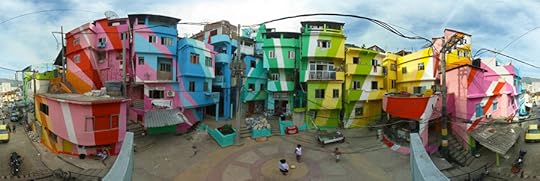
23
Santa Marta, Rio de Janeiro, Brazil
The Favela Painting Project is an ongoing Kickstarter campaign to improve the feel and appearance of Rio de Janeiro’s favelas (shanty towns). Their first (very successful) painting project was executed at Santa Marta, and they continue to recruit local youths to help beautify the city.
(via)

24
Annual Umbrella Installation, Agueda, Portugal
In what has become a yearly occurrence, Umbrella Sky Project installs a canopy of brightly colored umbrellas over the streets of Agueda from July to September. Not only do they provide shade from the strong summer sun, but they also add a startling pop of color and a break from the everyday to residents’ lives.
(via)

25
Dendy Street Beach, Melbourne, Australia
The Dendy Street Beach in Melbourne features precisely 82 brightly painted “bathing boxes,” all of the same size and shape, usually used for shelter or for changing in and out of swimwear. All of these boxes retain their original Victorian-era architecture, and are the only surviving such structures close to the city’s business district.
(via)

26
Rainbow eucalyptus groves, Mindanao, Philippines
Though the outer bark of the rainbow eucalyptus is a brownish-purple, it flakes away to reveal the green inner bark, which matures into blue, then orange, then purple and maroon. This occurs over the whole of the tree, creating a rainbow-like appearance.
(via)

27
La Boca, Buenos Aires, Argentina
Argentine artist Benito Quinquela Martin spent three years, from 1954-1957, converting this closed-rail-line-turned-landfill into a street museum. Painted in bright colors, the traditional pedestrian alley called Caminito hosts tango performances, as well as artists selling tango-related memorabilia.
(via)

28
Tunnel of Love, Klevan, Ukraine
On the banks of the Stubla River, in the Rivne Oblast province in western Ukraine, lies the small settlement of Klevan. Founded in 1458, and with a population of just 7,470, the town is one of only three “urban-type settlements” in the Rivne Raion district of Rivne Oblast (the other two are Kvasyliv and Orzhiv). The popular “tunnel of love” is actually tree coverage over a railroad track, formed by the passage of trains through the trees.
(via)

29
Longyearbyen, Norway
Not only is Longyearbyen the world’s northernmost town, but also the world’s northernmost settlement with greater than 1,000 residents. In mid-July, temperatures may get as high as 45˚F, but for most of the year, it stays resolutely within the single digits.
(via)

30
Shibuya, Tokyo, Japan
Known as the fashion center of Japan, Shibuya is renowned for its incredibly bright and colorful nightlife. Aside from the thousands of neon signs, Shibuya is also home to Shibuya Crossing, the busiest crosswalk in the world–traffic is regularly stopped from all directions as thousands of pedestrians flood the entire street.
(via)

31
Salar de Uyuni, Bolivia
These 4,086 square miles in southwest Bolivia make up the world’s largest salt flat. The vast and incredibly flat plains and clear skies of Salar de Uyuni make it both one of the most famous “natural mirrors” on the planet, as well as an ideal altimeter calibration site for Earth observation satellites.
(via)

32
Jodhpur, India
Founded in 1459, the “Sun City” of India is another curiously blue construct on the edge of the desert. The blue paint practice is thought to have originated from Brahmins (high priests in the Indian caste system) painting their homes blue to distinguish them as a holier status than the surroundings, a trend that then caught on for the balance of the city.
(via)

33
Caño Cristales River, Colombia
Also known as “The River of Five Colors” or “The Liquid Rainbow,” the colors of this South American river are primarily due to a dense population of corals and aquatic herbs. However, due to its high concentration of sedimentary minerals, Caño Cristales is completely devoid of fish.
(via)

34
St. John's, Newfoundland, Canada
With its hilly terrain and labyrinth of streets, this “San Francisco of Canada” has been inhabited from the 16th century onward. The majority of the city is protected as historical landmark, as it is considered the oldest English settlement in North America to have expanded into a city.
(via)

35
Júzcar, Spain
In the province of Málaga in southern Spain, Júzcar was originally one of the “White Towns of Andalusia” until 2011, when Sony Pictures used 1,100 gallons of blue paint to cover the town as a promotion for the upcoming Smurfs movie. This increased tourism to the location by about 533% in the 6 months after the stunt, and despite Sony’s offer to return the town to its historic white, residents voted to keep it blue.
(via)

36
Lavender fields, Provence, France
Huge fields of lavender are grown and harvested every year in France and the UK. Provence in southeastern France is particularly renowned for its geometric purple landscapes, blooming in late June and early July.
(via)

37
Pelourinho, Salvador, Brazil
Located at the center of the historic district in Salvador, Bahia, Pelourinho was painted as part of a cultural revival project. Today, it is a center for the arts, featuring daily events like musical performances, dances, short plays, and live band practices as part of the Pelourinho Night and Day Project.
(via)

38
Reed Flute Cave, Guilin, China
This natural limestone cave in China is over 180 million years old (though the colorful lighting is a bit more recent). Fun fact: Ink inscriptions on the cave walls have been dated all the way back to 792 AD, and tell us that the cave was an attraction even then.
(via)

39
Bo-Kaap, Cape Town, Africa
Formerly the Malay Quarter, Bo-Kaap was one of the original hubs of Malay culture, the original movement to bring Islam to South Africa. Today, property in Bo-Kaap is a hot commodity, with increasing gentrification stemming from the recent economic prosperity of Cape Town.
(via)

40
Binalong Bay, Bay of Fires, Tasmania
With white sand beaches and clear turquoise water, this small bay is set apart from thousands of other beaches in the world by its incredible bright orange rocks; their coloration is due to a very persistent species of lichen.
(via)

41
Wroclaw, Poland
The largest city in western Poland, Wroclaw has historically changed hands several times, from the Kingdom of Poland, to Bohemia, the Austrian Empire, Prussia, Germany, and back to Poland in 1945. It is also a regular host for major European and world sporting events, and has been named a “European Capital of Culture” for 2016.
(via)

42
Saint Basil’s Cathedral, Moscow
Also known, among many names, as “the Cathedral of the Protection of Most Holy Theotokos on the Moat,” Saint Basil’s Cathedral was constructed under Ivan the Terrible over the course of 1555-1561. The cathedral, marking the geometric center of Moscow, took on its vibrant hues starting in the 17th century, when bright colors became fashionable among the Russian people.
(via)
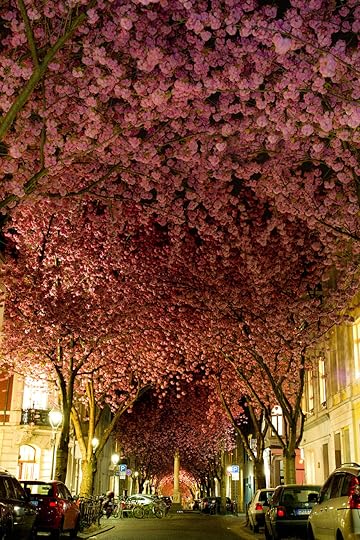
43
Bonn, Germany
Founded by the Romans in the first century BC, Bonn is one of the oldest cities in Germany, and is located in North Rhine-Westphalia on the banks of the Rhine River. The street pictured, known as Heerstrasse Bonn, was originally built to enable rapid military mobilization through the city. Today, the street is a popular tourist destination for its iconic cherry blossoms, with the annual Kirschblütenfest (Cherry Blossom Festival) occurring there mid-April and signaling the arrival of springtime.
(a href="http://www.dailygood.org/">via)

44
Willemstad, Curacao
Situated on the southern Caribbean island of Curacao, this harbor-accessed city center is both Curacao’s capital, as well as a UNESCO World Heritage Site. Established in 1634, the city is known for its Dutch architecture and reputation as the largest oil refinery in the Caribbean (formerly the world).
(via)

45
Guanajuato City, Guanajuato, Mexico
Known as one of the most colorful cities in Mexico, Guanajuato has a long history of art (as the birthplace of Diego Rivera, and home of Jose Chavez Morado and Olga Costa). It is also known for its Majolica pottery, done in the traditional Spanish style for the past 400 years, and the brightly hand-painted ceramics of Tarandacuao, located in Guanajuato state’s lowlands.
(via)

46
Great Barrier Reef, Queensland, Australia
The largest reef system in the world, the 2,900 individual reefs and 900 islands span some 133,000 square miles, and are home to more than 1,500 species of fish and countless other species of marine life. Despite extensive conservation efforts, climate change, pollution from farm runoff, invasive species (the crown of thorns starfish), and overfishing still present major threats to the reef system.
(via)

47
Dallol, Ethiopia
In the Danakil Depression (a crater from a volcanic explosion) this alien landscape was formed by Miocene salt deposts and hydrothermal activity. The constant geothermal activity forces geysers and hot springs up from below the Earth’s surface, which leak brine and acidic liquids. “Dallol” or “dissolution” refers to the green acid ponds (pH
(via)

48
Dubai Miracle Garden, Dubai
Now the “world’s biggest natural flower garden,” this 72,000 sq. foot garden contains over 45 million flowers, and is maintained through drip irrigation and the recycling of waste water.
(via)

49
Chamarel, Mauritius
Home of the “seven coloured earths” phenomenon still not fully explained by science, the multi-colored dunes at the village of Chamarel are one of the only places in the world where you can see as many as seven colors at once in nature.
(via)

50
Holi, worldwide
Primarily observed in India and Nepal, but with growing popularity among non-Hindus in South Asia, the spring festival of colors and love is an ancient Hindu religious festival that starts with a bonfire, and proceeds into a color-carnival. Participants are showered with powdered paint, paint-filled water guns, and paint-filled water balloons. This celebration subsequently spawned the commercial “Color Run” global phenomenon, gaining traction since 2011.
(via)

51
Rio Tinto, Spain
A river in southwestern Spain, the Rio Tinto flows from the Sierra Morena mountains south down to the Gulf of Cadiz. It gets its red color from dissolved iron deposits due to the river’s high acidity (pH 2), a possible byproduct of the heavy mining of precious metals in the area, from as early as 3,000 BC.
(via)

52
Kliluk Spotted Lake, Canada
Located northwest of Osoyoos, BC, the Kliluk Spotted Lake contains some of the highest concentrations of magnesium sulfate, calcium, and sodium sulfates (as well as a myriad of other minerals) in the world. When the water of the lake evaporates in the summer, it leaves pockets (the “spots’) of different colored ponds based on the individual mineral concentrations.
(via)

53
Palais des Congres, Montreal, Canada
This French-Canadian convention center was built in the early 1980s, directly above Montreal’s main underground highway, the Ville-Marie Expressway. The entrance hall is paneled entirely in colorful glass, so when the sun shines in every bit of architecture is bathed in bright colors.
(via)

54
Mendenhall Ice Caves, Juneau, Alaska
These unbelievably blue ice caves located within the Mendenhall Glacier in Alaska are only accessible by first kayaking to, and then ice climbing over, the glacier itself. However, sadly this glacier has receded 2 miles in the past 50 years, and may not be around much longer.
(via)

55
Da Nang, Vietnam
You’ve probably seen pictures or video of the newly-installed fire-breathing dragon bridge over the Han River, but in Da Nang, Vietnam many bridges are excitingly lit with colorful lights at night. And to top it off, Da Nang has hosted an international fireworks competition over the river every year since 2008.
(via)

56
Busan, South Korea
Every year on Buddha’s birthday, temples all across South Korea light up in an astonishing array of colorful paper “wish lanterns.” During the festivities, the Samgwangsa Temple in Busan is extravagantly decorated in over 10,000 geometric and artistic arrangements of lanterns.
(via)

57
Rainbow Staircase, Istanbul, Turkey
A local retiree named Huseyin Cetinel devoted four whole days and almost $1000 out-of-pocket to decorate a flight of stairs in his neighborhood in Istanbul. His fellow residents loved the project so much that when the government painted over the steps in gray, it inspired a movement across the entire city–since then, communities all over Istanbul have brightened their own neighborhoods with rainbow-colored steps.
(via)

58
The Rainbow Village, Taichung, Taiwan
Huang Yung-Fu (lovingly known as “Rainbow Grandpa”) was living in a military dependents village on the outskirts of Taichung when the government announced that they were planning to demolish it. To save his home, Grandpa Huang took to the streets with his paints and his brushes and turned the previously dismal village into a whimsical work of art (which the government has since taken steps to preserve!).
(via)

59
Legoland
Not only are they tons of fun, Legos also have the corner on the market for bright, primary colors. With locations in California, Florida, Denmark, Germany, Malaysia, and the UK, you can get your colorful construction fix on three continents.
(via)

60
Nyhavn, Copenhagen, Denmark
Nyhavn translates to “new harbor,” and describes the 17th century canal-front entertainment district in Copenhagen. Lined with distinctively colorful rowhouses (the first of which was constructed in 1661) and historical wooden ships, the district boasts an impressive number of canal-facing bars and restaurants (which provide patrons with blankets for outdoor dining even in colder months).
(via)

61
Kulusuk, Greenland
Located on a small island in southeast Greenland, this settlement was established in 1909 and is dotted with brightly painted wooden homes. The dialect of Greenlandic spoken in Kulusuk (called Tunumiit oraasiat) is considered the most innovative of the dialects and differs greatly from those found in western Greenland.
(via)
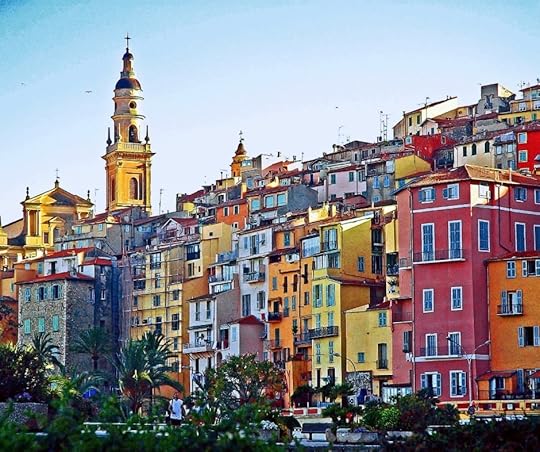
62
Menton, Cote d’Azur, France
Nicknamed “The Pearl of France,” this colorful coastal town is famous for its gardens and lemon and orange groves. In fact, the town is so centered on citrus that they throw a Lemon Festival every February, during which huge statues are built entirely out of different citrus fruits.
(via)

63
Keukenhof Park, Lisse, The Netherlands
Also called the “Garden of Europe,” Keukenhof Park (which covers 80 acres) is planted with over 7 million flower bulbs every year. Though the park is only open from March to May, it has been around since 1949 and remains a major attraction for tourists and dignitaries alike.
(via)

64
Old San Juan, Puerto Rico
The oldest settlement in Puerto Rico, Old San Juan is actually located on a narrow island to the north and is connected to the rest of the territory by bridges. The city is known for its blue cobblestone streets and brightly painted traditional alleys, the architecture of which is strictly regulated by the local government.
(via)

65
Kelimutu crater lakes, Indonesia
Kelimutu, one of hundreds of volcanoes in Indonesia, is unique in that it is topped with three crater lakes of drastically different colors. Tiwu Ata Mbupu (“Lake of Old People”) sits apart from the other two and appears deep blue or even black. Tiwu Nuwa Muri Koo Fai (“Lake of Maidens”) is separated from Tiwu Ata Polo (“Enchanted Lake”) by a shared crater wall. These lakes tend to be bright blue-green and red, respectively. The colors of these lakes have been known to change depending on the chemical composition of the water and the position of the sun.
(via)
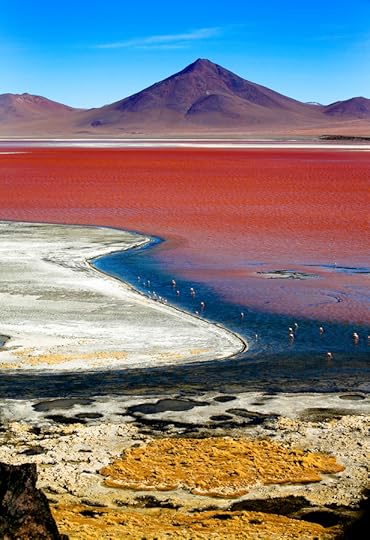
66
Laguna Colorada, Bolivia
This shallow salt lake in southwestern Bolivia is bright red, due to pigments in the sediment and the presence of certain algae. Huge flocks of flamingos can be found wading in the shallows, and the center of the lake is dotted with bright white islands made entirely of borax.
(via)

67
Guilin Rice Terraces, Longji, China
Located in southern China close to Vietnam, the Longji terraced rice fields cover an area of almost 20,000 acres and rise as high as 3,600 feet into the air. These fields, nicknamed the “Dragon’s Backbone” because of their resemblance to scales, first appeared in this area around 1300 AD and take on a different appearance in every season, depending on the life cycle of the rice being grown.
(via)

68
Waitomo Caves, New Zealand
These two-million-year-old caves in the North Island of New Zealand are home to Arachnocampa luminosa, a rare kind of glowworm whose presence in the caves in large quantities gives them their unique and unusual glow. What you’re actually seeing is the glow of the worm down a strand of silk meant for catching prey.
(via)

69
Kobe Luminarie, Kobe, Japan
After the Great Hanshin Earthquake of 1995, the Italian government donated 200,000 individually hand-painted lights to Japan. The lights, originally designed as a beacon of hope for the many citizens without power and families of lost loved ones, have been installed and displayed at a light festival every December since, in memory of the catastrophic event.
(via)
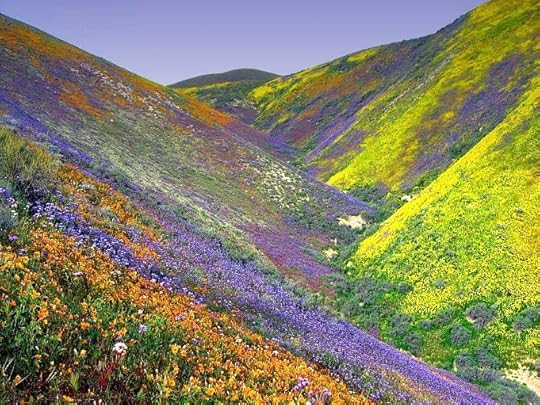
70
Valley of Flowers, Uttarakhand, India
This national park located in the West Himalayas remains largely unknown and untouched thanks to its inaccessibility. Requiring a 10.5-mile hike from Govindghat, near Joshimath in Garhwal, the location was originally dubbed the “Valley of Flowers” by three British mountaineers in 1931, after getting lost and stumbling on it by accident.
(via)

71
Lake Retba, Senegal
Literally translating into “pink lake,” this body of water north of the Cap Vert peninsula in northwest Africa is known for its high salt content, and gets its pink color from large concentrations of Dunaliella salina algae, which produce the red pigment as a byproduct of their metabolism. Coincidentally, Dunaliella salina is one of few organisms that can survive in such salty conditions, making Lake Retba an ideal home for the algae species.
(via)
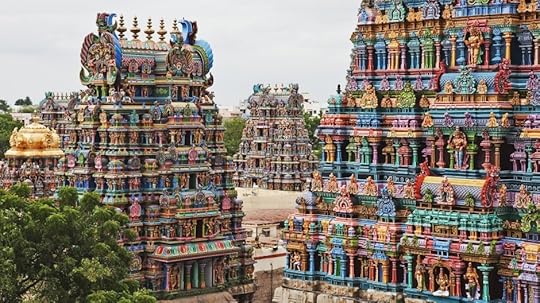
72
Meenakshi Temple, Madurai, India
Located on the southern bank of the Vaigai River in the 2500-year-old city of Madurai, the Meenakshi Amman Temple is dedicated to the gods Meenakshi (Parvati) and Sundareswarar (Shiva). The temple consists of 14 gopurams (gateway towers), all between 100-170 feet high, and two vimana (shrines).
(via)

73
Selangor, Malaysia
The most developed and populated of Malaysia’s 13 states, Selangor (or Darul Ehsan, “Abode of Sincerity”) is best known for being home to the National Zoo of Malaysia, featuring 4,000 animals. These trees, a major tourist attraction in I-City (Shah Alam), are each covered in vibrant single-colored LED lights, and are lit 365 days a year.
(via)

74
Five Flower Lake, Jiuzhaigou Valley, China
Located in the Jiuzhaigou Valley, a national park and reserve in Sichuan, the Five Flower Lake is the product of glacial runoff, with the blue, green, and turquoise waters drawing their color from differing calcium carbonate concentrations and varying depths. Due to the shallowness and clear waters of the Five Flower Lake, preserved ancient trees that litter the lakebed are visible from the surface.
(via)
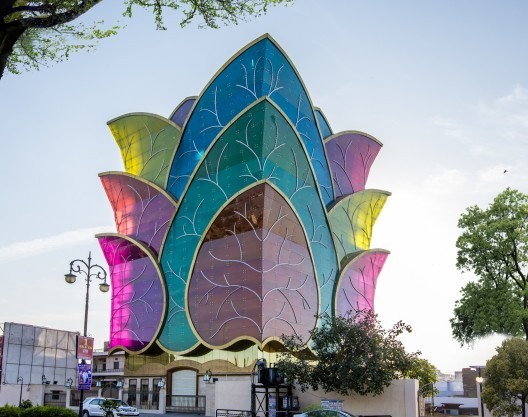
75
Motisons Tower, Jaipur, India
Architects Ravindra Verma and Rajesh Singh were given complete artistic license over the design of the building and drew inspiration from a lotus flower. When the sun sets, the 50,000-square-foot structure comes alive with color-changing light panels and lit animated leaf veins.
(via)
The post 75 places so colorful it’s hard to believe they’re real [pics] appeared first on Matador Network.

How to piss off a Texan

Photo: Thomas Hawk
Mess with Texas.
You most likely associate the phrase “Don’t mess with Texas” with cheesy t-shirts and that unmistakable brand of Texas swagger.
What you don’t know is that the slogan is the product of a 1980s anti-littering campaign and a federally registered trademark of the Texas Department of Transportation. The initiative is credited with cutting highway trash by 70% from 1986-1990.
So maybe the best way to piss off a Texan is to mess with our state — cruise down a Hill Country two-lane during wildflower season and throw your pickle juice and mustard-stained Whataburger wrapper out the window. Local law enforcement will be happy to collect the maximum $500 fine when they spot your out-of-state license plate.
Assume we’re all cowboys / dumb rednecks.
No, I didn’t ride a horse to school. No, I’ve never been on a working ranch. Automatically pegging Texans as backwardly rural, uninformed, or unworldly would be sadly missing the mark.
I’ve met more fellow Texans while traveling (places like South Korea, Argentina, Belgium) than I have people from any other state. And just a mile down the road from my house, at the University of Texas, researchers are at this very moment using over $600 million in annual research grants to analyze data from the farthest reaches of space, design the computers of the future, and develop groundbreaking biomedical technologies that may one day help cure cancer.
What a bunch of hicks.
Underestimate our geographic diversity.
The state borders encircle 268,580 square miles — that’s more than 100 Delawares.
In the East we’ve got the Piney Woods, a forest of pine and oak that covers 54,400 square miles (20+ Delawares, for those counting). The Great Plains of North Texas and the Panhandle comprise cotton fields (Texas is the largest US producer) and other agricultural land. Out West things get pretty desert-y — oil wells share real estate with wind farms, and the Guadalupe Mountains rise to 8,750ft (over 2,000 feet higher than anything east of the Mississippi). The coastal plains of South Texas and the scrubby hills of Central round out the picture, but of course all this is still a gross overgeneralization.
Bottom line: Whatever image you’ve generated in your mind to define “Texas,” it’s woefully inadequate.
Say the whole state sounds awful…except for Austin.
We get it — the world has a hard-on for Austin. But that still doesn’t explain why, when I’m traveling around the US and tell someone I live in ATX, they invariably respond with some riff on the above.
You’ve just dismissed over 25 million people out of hand. Kind of a dick move.
Move to Austin from San Francisco or Brooklyn and then shit-talk the rest of the state.
Go home.
Call it “George Bush’s state.”
W was born in Connecticut. HW was born in Massachusetts. While there are likely hundreds of George Bushes from Texas, they’re clearly not the ones you’re thinking of.
This is not a political beef — just a matter of birthright and heritage. But since you brought it up, maybe I should remind you there were over 5 million of us who voted for the other guys in 2000 and ’04. That’s like, 6 Delawares.
Make an “everything’s bigger in Texas” joke.
This is the territory of souvenir bumper stickers and franchise steakhouse wall art. Your joke will not land.
Ask why we don’t have an accent.
Because I grew up in a suburb of the 7th largest city in the nation.
You really need to specify anyway — are you talking East Texas drawl or West Texas twang…or the Mexican / Hispanic flavor that’s probably a more accurate, 21st-century reckoning of the “Texas accent”?
Drive like a tourist.
I know — you are a tourist. But here’s a tip: When you’re on a country highway, taking your time, enjoying the pastoral sights, and you suddenly check your rearview to see an F-350 bearing down on your rear bumper, find a good spot to drift onto the shoulder a ways so that cowboy/girl can pass you more easily.
If you see the hazards blink or a hand wave through the rear glass, you know you’ve done good.
Mix up your NBA teams.
In San Antonio it’s the Spurs, in Dallas the Mavericks, in Houston the Rockets. There are no exceptions.
Sauce your meat.
Again, Texas is too big to have only one style of barbecue, but the Central Texas variety is currently ascendant — the main element of which is certainly not any kind of sauce.
When you order BBQ in Lockhart or Llano, in Luling, Taylor, or the hipster trailers in Austin, it’s all about the quality of meat, the wood used, and the cook time. Dousing that half pound of moist brisket in a pool of sauce is a kick in the spurs to the artiste behind the smoker. Go back to Kansas City.
Order a burrito.
Seriously? You came to the best place in the world to eat Mexican food outside of Mexico and ordered some Californian perversion of the real thing? There’s only one person who should be pissed off about that, and it’s you. 
The post How to piss off a Texan appeared first on Matador Network.

PSA points out that the Olympics have always been kinda gay
THIS AWESOME NEW PSA from the Canada Institute of Diversity and Inclusion points out that the Olympics – in this case the luge – have always been a little bit gay. And they have a point: in the midst of all of the horrific violence being committed against homosexuals in Russia, it’s hard to see how homophobia fits into an international event predicated on tolerance and inclusion, and that has it’s roots in naked men wrestling.
If you want to do something for LGBT rights globally, try giving to the Human Rights Campaign, or at least follow them on
The post PSA points out that the Olympics have always been kinda gay appeared first on Matador Network.

Profile of the traveler of the future
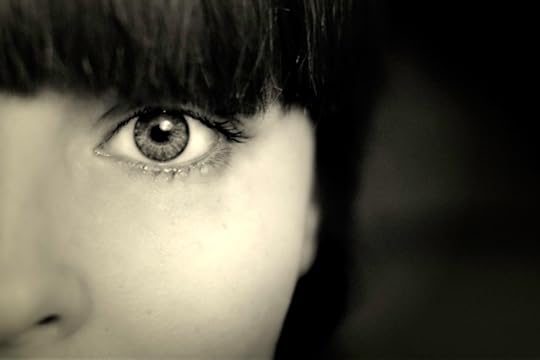
Photo: Elena Mitsura
TRAVEL TODAY seems almost impossibly removed from that of our ancestors. Imagine boarding a ship 150 years ago and knowing it might be years, decades before you’d ever see the people again who were kissing you goodbye — if you returned at all.
Following this same logic, our travels of today — studying places via Google Earth, creating digital boarding passes on our smartphones, blogging about our travels via words and images — all will surely seem as primitive and perhaps nostalgic to our descendants 150 years from now as our ancestors’ travels do to us.
And yet on some level, progress is an illusion. For every technological innovation gained, there’s a way of connecting or interacting that’s lost, forgotten. Take map reading skills, for example. Or being able to navigate by the stars.
What’s constant is the way travel feels. The inner landscape of emotions that reflects each part of a journey. Like the traveler of 150 years ago, the traveler of the future — even with the 6,000mph vactrains that take her from NY to LA in 20 minutes, the medicines that rapidly heal damage or disease, the cameras that capture and communicate data holographically — she will still have the same giddiness that comes before a trip, the same sense of resolution, of circularity, that arrives when you get home.
Even if that home is in outer space.
With all this in mind, here is a profile of the future traveler.

Photo: Valters Krontals
1. She’ll make intercontinental travel in a matter of minutes.
Right now our velocity as travelers is governed by friction and weather conditions. Future technologies will all but eliminate these. One technology already in design stages in China is the vactrain.
An idea that’s been around since the early 20th century, the vactrain is simply a train that operates within a vacuum tube. Instead of wheels, which are limited by friction (wear, heat, etc), the train would levitate on (and be propelled by) magnets. And because there’s no air resistance inside a vacuum, the train could reach speeds estimated at 5,000 to 6,000mph, allowing travelers to go from NY to Beijing in less than two hours.
2. She’ll have “smart” clothes.
Future travelers will look back at our “tech-integrated” clothing — jackets with special pockets and ports for iPods and earbuds — as more akin to animal pelts than the clothing they’ll wear.
Garments will both regulate conditions from the external environment — temperature, humidity, radiation, etc — as well as the internal environment. “Skin”-like primary layers will monitor vital signs and be able to apply pressure to areas to increase circulation or soothe inflammation. The fabrics will themselves be energy sources, generating solar power.
3. She’ll have various options for personal flight.

Photo: Zach Dischner
The current models of flying cars will look like Fred Flintstone-style vehicles to future travelers, who will not only have different types of personal transport vehicles, but actual suits that take the glide ratio of current wingsuit technology and expand it so people can literally “jump and fly.”
4. There will be no effort to creating “media;” it will come directly from her memory.
The whole notion of capturing media, whether by taking a photo or writing something down, will be replaced by the ability to simply download our minds’ observations, ideas, conversations, memories. And the approach by which we’re currently pursuing this today — through invasive implantation — will be long supplanted by noninvasive sensors that allow “connection” simply through brainwaves. The whole idea of “wires” will be looked at like the horse and buggy.
5. Language acquisition will give her nuanced appreciation of different cultures.
The finest points of travel may be the moments when you finally have enough vocabulary and time in another culture to where you begin to “get” cultural nuances. This is when things stop feeling “foreign” and suddenly take on a sense of identity.
Future travelers will be able to “train” themselves before traveling in languages in ways that bring together the physiognomy, the humor, and other elements of language acquisition that currently take years to master (unless you’re a kid), and compress them to incredibly short times.
6. Her concept of “home” and “lifestyle” will include many different places / possibilities.
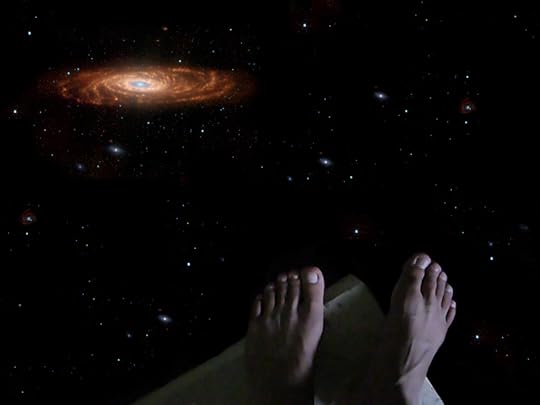
Photo: Bashar Al-Ba’noon
Future travelers will move around in ways that seem only like lifestyles of the wealthy today. The reason? “Houses” will be hyper efficient, tradeable, and instantly ‘scanable’ for others to rent or homeswap at the drop of a hat.
Whereas now we look at “destinations” and “activities” as the touchpoints of travel, in the future we’ll be able to scan through menus of entire lifestyles, and inhabit them for different periods of time. Thus, our concepts of what’s “home,” of what’s “school,” of where we belong, will totally change. 
This post is sponsored by SanDisk. Click through to read more of life’s stories, told from memory.
The post Profile of the traveler of the future appeared first on Matador Network.

February 10, 2014
The most OUT OF CONTROL thing you can do between two hot air balloons
I USED TO think that slacklining was the hippie version of tight-rope walking, but since my college days it has turned into one of the biggest adrenaline-pumping experiences out there. People have slacklined across the Grand Canyon, between skyscrapers, and now, they are pushing the limit with nothing between them but two hot air balloons.
“Don’t try this at home” doesn’t even come close to a disclaimer. 
The post The most OUT OF CONTROL thing you can do between two hot air balloons appeared first on Matador Network.

Matador Network's Blog
- Matador Network's profile
- 6 followers




